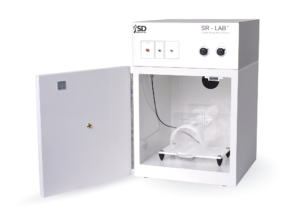The acoustic startle response refers to an unconditional reflex which is manifested as a rapid contraction of skeletal and facial muscles in response to an intense and sudden startling stimulus. The acoustic startle response is especially useful for translational research as it is consistent across a range of species. It also uses neural circuitry which is simple in nature and is sensitive to a range of manipulations in experiments.

Acoustic Startle Response and PPI
The rodent acoustic startle response is often used for the study of intrinsic properties of the central nervous system such as sensitization, fear and anxiety, habituation, classical conditioning, drug effects and sensorimotor gating.
An important phenomenon employed to model sensorimotor gating is prepulse inhibition (PPI) which is a suppression of the startle response when a weak pre-stimulus comes before the strong startling stimulus.
Issues in sensorimotor gating are critical components of a number of neuropsychiatric disorders including Huntington’s disease, schizophrenia and OCD. This is why PPI of the rodent acoustic startle response is at the forefront of the study of pathophysiology, genetics and pharmacology of these disorders.
How is Acoustic Startle Response Assessed?
Assessing acoustic startle response in rodents is difficult as it is extremely brief. This challenge has led to rodent acoustic startle response being monitored in stabilimeter chambers which limit animal movement, which can be unpleasant and stressful for animals, requiring extensive habituation and calming.
The acoustic startle response manifests as an exaggerated flinching response to a strong auditory stimulus (pre-pulse) which is unexpected. This response may be weakened by a preceding weaker stimulus (pre-pulse) and this is the main underlying pre-pulse inhibition (PPI). PPI has been found in a number of species such as humans and mice, offering the operational measure of sensorimotor gating which displays the ability of an animal to integrate and prevent sensory information successfully.
Acoustic Startle Response Test System from SDI
The SR-LAB acoustic startle response system is the most prolifically employed startle reflex research system for the quantification of acoustic startle response, PPI, and fear-potentiated startle (FPS).
The SR-LAB offers a holistic hardware and software solution for a broad range of acoustic startle response applications. This system can also be arranged with as many as 16 stations for high throughput needs.
SR-LAB acoustic startle response software controls a plethora of tone, noise burst, air puffs, lights, foot shock, and background noise combinations and supports multiple test paradigms without the need for additional software.
Benefits of the Acoustic Startle Response Test System from SDI
The SR-LAB system can test the most prevalent test paradigms easily, and only requires one software program for all paradigms, which makes it more cost-effective and offers the flexibility to design customized paradigms. Data can be verified with ease, as each response offers the ability to review the entire waveform to verify numeric data.
The SR-LABS’s tubular enclosures are created to allow animals to turn without constraint, meaning they are not subject to restraint stress which can impact results of acoustic startle response tests significantly. However, the tubular design ensures that animals are kept over the sensor for reliable results.
If you would like to find out more about our acoustic startle response test systems, please contact us today for more information.